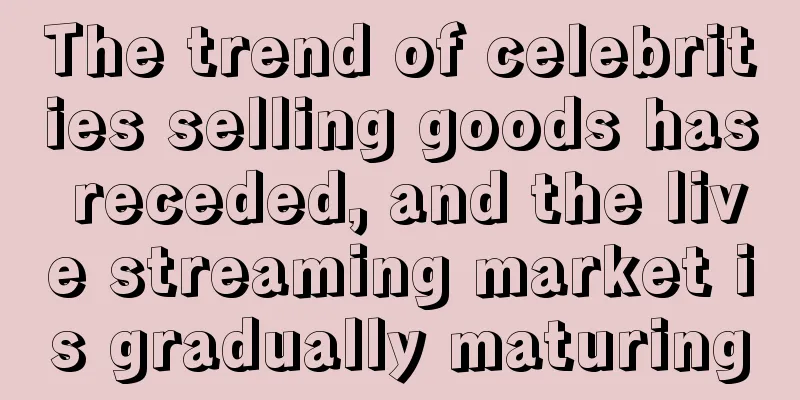How does Pinduoduo drag down prices?

Do you know what the input-output ratio is? Those who know can pretend not to know. Here is another popular science for everyone. The input-output ratio refers to the input-output ratio of your advertising . For example, if the input-output ratio is 10, you spend 1 yuan on advertising and can bring in 10 yuan in revenue. Even a fool knows that the higher the investment-output ratio, the better. Previously, Pinduoduo could set the investment-output ratio at 100. Your daily advertising fee of 100 yuan can bring in sales of 10,000 yuan, and 200 yuan can bring in sales of 20,000 yuan. Some people still want natural orders. Life is so good, what else do you need? The higher the investment-to-production ratio, the better. The lower it is, the more annoying it is. Let’s not talk about profitability first. Let me ask you one question: Has your actual investment at present broken even? I guess many people will be upset when they see this question. This morning I saw in my e-commerce group that an operation partner received 20,000 orders, but he was not happy at all and was extremely worried. These 20,000 orders were all made at a loss, so how could he be happy? Actual losses in production are not isolated cases, but the norm, and are the primary problem that e-commerce operations urgently need to solve . So how can we increase production to above break-even while keeping the number of orders unchanged, or even generate a profit? Here I summarize my years of experience in price reduction and share it with you. I hope that after reading this, you can also learn how to reduce prices and increase the production of your products. The key is to make money. 01 The underlying logic of price manipulationBefore officially discussing the price-drag operation method, we still need to talk about the theoretical knowledge. Because the technique is easy to learn, you just need to follow the steps I tell you. But this will only make you an executor without thoughts. What you really need to understand is the Tao, the underlying logic behind things. If you understand the principle of price reduction, you will not operate in a rigid manner when reducing prices. Only by operating with ease can you truly achieve a win-win situation, which is to increase the input-output ratio without reducing the number of orders. Let’s first talk about the term price dragging. Why is it called price dragging instead of price adjustment? From the literal meaning, you should be able to feel that price-drag will be a long process . The essence of price-drag is to have a continuous volume of transactions, and lower your bid while the GMV weight continues to increase. In this way, the actual input-to-output ratio is improved, and the order volume remains stable. What is price adjustment? It is a single modification of the input-to-output ratio. If you adjust the input-to-output ratio from 3 to 5 at one time, it will drop the next day after being exposed. If you drag the price down and increase the production from 3 to 5, your exposure may decrease, but it will most likely be only a slight decrease, and your order volume may even continue to grow. 02 The scope of price increaseSome people on the Internet say that the price hike should be controlled within 5% or 10%. Is this reasonable? I don't know either, because I'm not very good at math. I only remember this number: for an output within 3, the price will be adjusted by 0.1~0.2 each time; for an output above 3, the price will be adjusted by 0.2~0.5 each time. The specific number will be determined based on the actual situation. What is reality? It's the rate at which your plan is being spent . The faster the speed, the better the linked data and the higher the weight. For such a plan, you can be more relaxed about the price. When I was dragging a product that was about to expire (with a very low selling price), the exposure increased rapidly. I started dragging from 5 and increased it in steps of 0.3. In theory, the drag price can be modified 1 to 2 times a day. I changed this plan twice, and the production was 5.6, but the exposure still did not decrease. I knew that I had bid too low for the production. I increased it to 6.5 on the same day, and the exposure data on the next day showed that it was still increasing. So in 5 days, I dragged the investment-output ratio from 6 to 12, until the investment-output ratio was stuck and could not be dragged. Is it over when it reaches 12? Not yet, I started to control the daily limit, because I found that there were natural orders, so I further improved the link's investment-output ratio from the perspective of daily limit. This example tells us that the price range is not fixed. The 5% to 10% price range refers to the situation when the number of link orders generally grows weakly but the exposure remains stable. Just like a person with a cold and fever, you can't let him do big movements, otherwise his body can't bear it. But for a young man who is full of energy and vitality, it's okay to arrange him to go bungee jumping, and he may even think, is there anything more exciting? 03 Case analysis: how to drag down pricesThere are not many cases of product price stunners with explosive data. Most of the product price stunners have low order volume or are always losing money. I have many links like this. Here is a classic example of a delay. The product is a cleaning brand with an average customer price of 80 yuan. The break-even investment is 5, the initial investment is 4, and the final investment is delayed to 7. How did it delay? When the order volume continued to stabilize and did not increase, I began to drag the price down. First, I analyzed the click-through rate and conversion rate of the link, which were 7% and 10% respectively . Compared with the industry data, this data is not low, so to be safe, I chose a price range of 0.2. On the first day, the production ratio was adjusted from 4 to 4.2, and then the exposure data of the day was observed. As expected, because the link data was excellent, I adjusted the output to 4.2, which had almost no impact on the number of orders and exposure that day, and my actual output was indeed increased by about 0.1. This was a good signal and gave me confidence in the success of the price increase. So the next day, the production was adjusted from 4.2 to 4.4. If the price drag didn't have much impact, I would just hurry up and adjust it to 5 to break even. But after adjusting to 4.4, the exposure volume dropped. The next day, looking at the exposure data, the overall trend after the price adjustment was downward. So, on the third day, I paused and didn't adjust the production, just to observe. The exposure on the third day did not drop and stabilized, and began to rise slowly on the fourth day. The reason why I could stay calm was that the conversion data of the link gave me courage. If the link data was not good, let alone raising the price by 0.2, even if it was increased by 0.02, the exposure might be gone. It can be said that your confidence in lowering the price comes from the traffic carrying capacity of your link. If the link is durable, there is no need to worry about lowering the price . I adjusted and stopped like this for about 2 weeks, and I dragged the investment-to-production ratio from 4 to 5, and the exposure and order volume were no different from before the price adjustment. Is this the end? No, I not only want to break even, I also want to make a profit, so I started to explore the ceiling of the investment-to-production ratio. No matter how good the link data is, there will always be a balance point for the investment-to-production ratio. After 2 months of testing, the final result is that the investment-to-production ratio of 7 is the best. Because if it increases further, my exposure will drop sharply. Delaying the investment-to-production ratio to 7 is the most reasonable investment-to-production ratio to ensure my maximum order volume and maximum profit. 04 LastI often use dough kneading to illustrate the price adjustment. When kneading dough, if the dough is dry, you need to add water. If the dough is too thin, you need to add more flour. As for how much to add? It depends on the degree of thinness. If the dough is as dry as the soil on the moon, you can add as much water as you want. Just like dragging the price, the link conversion rate is extremely high. If you don't work hard to increase the production, what are you doing? After driving for a long time and kneading the dough for a long time, you will have a feel for it. You don't need anyone to teach you. You will naturally know when to add water and how much water to add. Author: Tiger Talks Operations Source: WeChat official account: "Tiger Talks about Operations (ID: laohujiangyy)" |
<<: Live streaming sales have spread to Southeast Asia, and Tiktok has directly boosted sales
Recommend
Pingdaixue has cured every young person with "consumption internal consumption"
Substitution consumption is popular among young pe...
Brand personality theory
People with personality are often more likely to b...
Exploring Brand Tone (2023 Edition)
Many companies now emphasize brand tone, which sou...
Our Xiaohongshu operation is resigning and starting a business
Nowadays, more and more people choose to join Xiao...
Douyin’s anti-counterfeiting campaign is very popular, but I advise you not to do it!
Have you seen the popular shopping videos that fig...
What are the payment platforms for Amazon? Which is the best third-party payment collection service for Amazon?
Amazon plays a pivotal role in the global e-commer...
With over 300 million yuan bet on the European Cup, can Chinese brands rest easy?
Why did the European Cup attract so many Chinese b...
How to solve the problem of Amazon's follow-up sales? This is the most effective solution!
Nowadays, competition in the e-commerce industry i...
How can brands gain insight into users and achieve precision marketing on Xiaohongshu?
This article will explore in depth how brands can ...
McMahon walkie-talkies are a blast. Why do McDonald’s toys always appeal to consumers?
This article deeply analyzes how McDonald's su...
Cute girls fall in love with Zulijian. We summarize 3 consumption trends of young people
This article explores how Zulijian senior shoes st...
Phoenix Legend plays father and daughter, Ele.me plays with the name of noodle shop, Hisense focuses on nostalgia [Case Excavator]
This article selects the top 5 marketing cases of ...
Operational strategy: 8 dimensions that influence content virality
In recent years, we often hear about hot products ...
What is the difference between Shopee local stores and cross-border stores?
Shopee has both local stores and cross-border stor...
3 million followers in 5 days! "Tour Guide Xiao Qi" becomes popular, is the tourism track on Douyin gaining momentum?
Recently, a Xinjiang tour guide became popular, wi...









